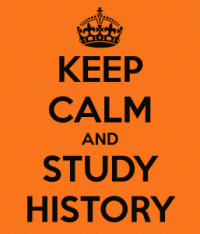Terry, does Hutton mention the Association Générale de l'Automobile (AGA)?
Apparently, that was the organization actually created in June 1904 before changing its name in 1906 to the AIACR. This was one of my relatively recent research surprises when I finally realized that I had this information for a long number of years. (Doh!)
Or at least that is how I have interpreted it. Any others with an idea regarding also feel welcome to add their insight on this.
I have not heard of the AGR and a Google search only came up with one reference that I could see c1911 which translated roughly reads: We know that the General Automobile Association is currently working to have on the roads poles surmounted by indicator plates, which offer the figurative representation of the obstacles. The GA reproached the posts previously established by the Touring Club for ..
Tt would certainly be worth looking in period sources for the Association Générale de l'Automobile (AGA). The may be something on line in the BnF
It might be a good idea to explain what I am after:
I am working on book about motorcyclist Eric Fernihough using his papers in the Brooklands Museum and much other stuff I have found. There is so much rubbish written about the world's motorcycle speed records that I and another person (whose main interest is cars) have been working to sort fact from fiction. In order to do this properly we need to know what rules were in place at various times. There is some overlap between motorcycles and cars because in the very early days the same people ran both.
In summary, the first credible record trials were run by or for the Automobile Club de France (ACF) at Acheres NW of Paris in 1898 and were for cars and motorcycles.
In 1902 the Commission Sportive of the ACF decided that courses must be level, measured and electrically timed by Mors equipment and a course was established and homologated at Dourdan SW of Paris. I don't know what other rules were applied then.There may then or later have been a weight limit of 50kg for motorcycles but that is not clear yet.
The Association Internationale des Automobiles Clubs Reconnus (AIACR) and the Federation Internationale des Clubs Motocyclistes (FICM) were both formed in 1904 and both had more important things to deal with than records.
As far as I can tell the ACF was the French member of the FICM and continued to manage some sort of recognition of car world's 'best speeds' although I do not know if this was on behalf of the AIACR or just for its own interest.
At Brooklands from 1907 the BARC had taken timing very seriously; this is well documented and presumably it was homologated by or to the requirements of the ACF. A 125.95mph/202.68km speed at Brooklands in November 1909 was the first to be recognized by the AIACR as a world's record and around this time the RAC proposed to the AIACR that all short distance record times should be the mean of runs in two directions and this was adopted by the AIACR for implementation in 1911.
FInally, as far as preWW1 goes, the third meeting of the FICM in October 1913 decided to adopt the same rules as the AIACR (whatever they were) and presumably that applied from 1914 onwards.
I should say I have yet to dig deeper into this but it will be obvious that the relevant minutes of the FIA and the FIM would tell me most of what I want to know. After some years of asking, the FIM archives have not been opened since I was told they were all in store pending renovations (a stock excuse I think). I haven't yet bothered with the FIA. The RAC and ACU minutes may help.
Any clues or reliable information would be appreciated.
Edited by tsrwright, 08 March 2019 - 03:23.



















